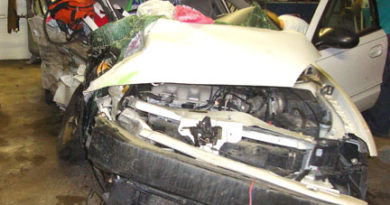Planting Season in Full Swing: Storm may Call for Replanting
For many farmers, planting season is coming to a close; however, with last week’s flooding, it could mean replanting for some farmers.
“With that much rain there was erosion,” said Darren Sudbeck, local agronomist. “The water took out some of the corn that was planted. Some areas need to be replanted but it’s not widespread.”
Fields near creeks and rivers that flooded will have to be replanted; however, in general, Sudbeck does not anticipate a large number of acres being replanted.
“There’s thin spots that got washed out but for the most part you’re not replanting whole fields,” said Sudbeck. “You just need to make a decision on whether to replant or not. It’s too early to tell too much.”
As an agronomist, Sudbeck is a crop consultant for farmers. He contracts with farmers and scouts fields on a weekly basis checking for things like weeds and irrigation scheduling. Sudbeck also sells seed.
Up until last week, corn planting was going right on time, if not a little bit ahead of schedule.
“We’re 90-95 percent planted on corn,” said Sudbeck. “That’s fairly typical for this time of year.”
Sudbeck also claimed a 25-30 percent progress with soy beans.
Prior to the big storm, the recent downpours had proven helpful for the season.
“A lot of corn was starting to emerge,” said Sudbeck. “[That] rain [allowed] for easier merging and better population.”
Wheat has experienced a fair amount of winter kill. Wheat is planted in the fall and due to the cold temperatures of winter, some of the wheat crop was killed off.
“There’s some thin spots in wheat fields,” said Sudbeck.
Stripe rust, a fungal disease, is also showing up in wheat fields.
According to Sudbeck, the disease starts in the south. Then the spores get in the air and blow up north.
There’s also a fairly high population of alfalfa weevil and aphids which also reside in alfalfa.
Sudbeck is still evaluating storm damage on fields that were planted.




